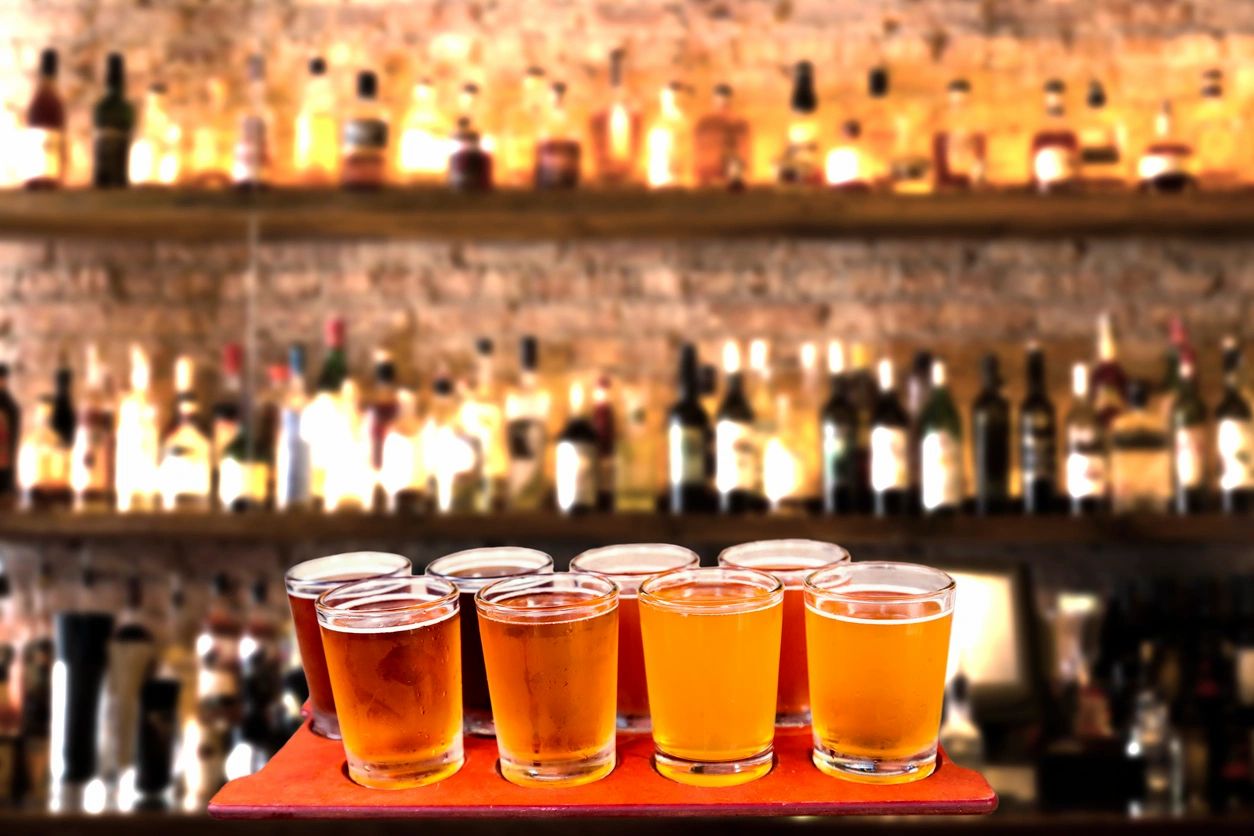Caitlyn O’Connor walks past shelves of monochromatically designed bottles filled with dark and clear spirits. Even though the 25-year-old Muncie resident only drinks hard liquor and wine, she still stops to stare through the tall glass cooler doors stocked with craft beers. The bright cooler lights enhance each character displaying some form of a vibrant, trippy or hipster vibe.
“I have always wanted to try one, but never know which one to buy,” O'Connor said while looking at the Extended Jam Tropical IPA by Destihl Brewery, which featured a black and hot pink wave pattern emerging around a white skull with hot pink bandana and beard.
Although craft beer cans may be a great place to draw tattoo inspirations from, O’Connor picks up a bottle of Merlot and continues to the checkout-lane craft-beer-less.
Carly Trulock, Elm Street Brewing Company bartender and beer classroom instructor, said it is not uncommon for people to not know where to start when it comes to craft beer. Because of the endless styles, each taste landing on a spectrum of flavors as large as a rainbow, many people become discouraged from craft beer after trying one and hating it.
To determine one’s preference, Trulock recommends people go to a bar, order a flight, and talk about the different options with a bartender.
Another option for people interested in exploring craft beer on their own is to head to one of the many liquor and grocery stores that now offer “build-your-own” six-pack options. This allows people to mix and match different beers.
Craft Beer Virgin
Ready to explore, O'Connor bellied up to the Elm Street bar and shaded in five of the numbers that match the craft beers Trulock recommended she try off the giant flat screen above the row of 30 tap handles. Her flight was delivered in a wooden carrier, and each 4 oz. glass was filled with beer that ranged from pink and yellow to orange, brown and almost black.
As she took a sip of the first berry pink colored beer, Mammoth Hammer, which falls under the craft beer style sour, she did not like the tart taste. These styles of beer get their flavor from wild bacteria and yeast, and their colors typically vary depending on the fruit it is brewed with.
The second glass she tried, Citranot, which falls under the craft beer style India Pale Ale, made her wince immediately. However, IPA’s are considered one of the most popular styles in craft beer with dozens of substyles. People often grow to like the taste, Trulock said.
The third beer, Anti Bantam Light, which falls under the craft beer style English cream ale, was a charm. Turlock was not surprised O’Connor liked Anti Bantam Light, because she said it is a common introductory drink to the craft beer world. She often recommends it to beginning craft beer drinkers because it resembles traditional lager beer. She said sours are typically good introductory options too.
The fourth beer O’Connor tried, Kentuck Buddies, which falls under the craft beer style Kentucky Common, also resembles a cream ale that is a little brown. O’Connor was surprised by the spicy taste, which she thought was cinnamon.
The last one, Chuck’s Chocolate, tasted exactly like its name, chocolaty. This craft beer falls under the style stout, which are often the darkest colored craft beers. It was brewed with hot chocolate and had Madagascar Bourbon Vanilla Beans and gallons of pure cacao added to it.
“It has a chocolate taste forward, and a smooth vanilla finish,” Trulock said.
Rather than saying how craft beer tastes from a drink, the process from sip to after taste is examined in the craft beer world, hence the art of brewing a beer with desired tastes at each point of the drinking experience. Different flavors may appear throughout the drink.
Hops and Alcohol
Besides the style of beer, drinkers can learn what craft beers they savor based off of a couple other factors. The first is whether one likes hoppy beer. Along with alcohol by volume, ABV, there is another acronym with craft beer called international bitterness units, IBU. The higher the percentage of IBU, the more hop plant is in the beer, which gives the beer a bitter after taste.
O’Connor’s favorite, Anti Bantam Light, has an 18 IBU, which means it has some hop, but is relatively low in comparison to Elm Street’s, The Reverse Mullet, that has a 71 IBU. Not all craft beers have hops in them, though. Many sour beers, like the Mammoth Hammer have no IBU.
Craft beers tend to have more ABV than traditional lager beers, so Turlock said although people are free to drink their beers however they want, she recommends not downing it like a shot.
Not Mainstream
The motto “Think Strange. Drink Strange” represents the individuals who are part of the craft beer culture. This community unites people across the world through the art and value of the brewing process.
“It’s important to recognize other people’s craft,” Turlock said.
Although craft beer is a competitive community, it is also a supportive community. Brewers often talk about the beers they are brewing and share tips with others on how to achieve certain styles and flavors.
According to Market Data Forecast, the craft beer market was worth 125 billion in 2018, it is estimated to reach 328 billion by 2023. Although these small breweries want to brew quality beers others will enjoy, they walk a fine line to not become mainstream in fear mass production will take away the quality of flavors that make craft beer unique to the community.
To explore local and global beers, breweries and bars, visit Untappd.
